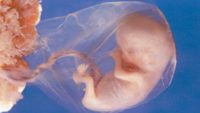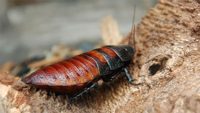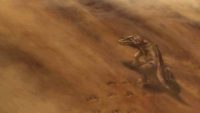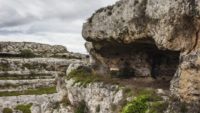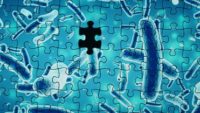Tetragonula carbonaria are stingless bees that build complex spiral brood combs. Scientists have likened these to crystals, but bees are far more complex than crystals. …read more Source: creation.com
By Dr. Georgia Purdom Many people think of the skeletal structure as static, but as our ribs show, they are some of the most dynamic structures in our bodies. …read more Source: AIG Daily
By Heather Brinson Bruce Meerkat clans were working together in southern Africa long before Mark Zuckerberg and Jack Dorsey came on the scene. …read more Source: AIG Daily
It may not need tectonics or climate change. …read more Source: creation.com
Brain researchers from San Diego State University have just reported digitally capturing the dense folds of a preserved human cerebellum using a high resolution MRI device.1 Once thought to merely coordinate rote body movements, these brain folds contain newly revealed design features that challenge conventional concepts of where the human brain came from. The cerebellum, which literally in Latin means “tiny brain,… More… …read more Source: icr.org
By Dr. Elizabeth Mitchell Evolutionists have speculated embryos replay the evolutionary history of their species as they develop – but this is demonstrably false. …read more Source: AIG Daily
A new way of looking at your world. …read more Source: creation.com
Exciting rock formations show that fossils form naturally much faster than we are conditioned to believe. …read more Source: creation.com
By Rich Wendling Shy, gentle, and easy to care for — does the hissing cockroach sound like an ideal pet? …read more Source: AIG Daily
Scientists learn to encode 3-D printed objects with instructions coded in DNA, enabling them to replicate the objects again and again. …read more Source: creation.com
By Dr. Danny R. Faulkner Does the Bible teach or demand geocentrism? Hardly. Does good science indicate that the earth is motionless? Certainly not. Then why do some Christians believe otherwise? …read more Source: AIG Daily
Dynein and other molecular motors showcase God’s amazing design in biology. …read more Source: creation.com
August is an important month for sunflowers—those gigantic, bright-yellow flowers with brownish, round seed heads bordered by radiating yellow ligules (petal-like rays) that resemble a shining, summer sun.1,2,3 A recent report in the Chesapeake Bay Journal details some of the humble sunflower’s splendor, and those details should remind us that God’s bioengineering genius is boundless.1 More… …read more Source: icr.org
By Ken Ham Every year, hordes of tourists descend on Grand Canyon to enjoy the natural beauty of this geological wonder. But many tourists hiking the popular Bright Angel Trail missed something very interesting—a series of fossilized footprints preserved in a boulder, lying next to the trail, that had broken off a cliff in the nearby Manakacha Formation. But in 2016, a geology professor hiking with his students noticed the footprints, and now research on these tracks has been released. One of the scientists who studied these tracks, Stephen Rowland, shares: These are by far the oldest vertebrate tracks in [More]
A Civic Biology was the centerpiece of the 1925 Scopes Monkey Trial. It is high time to review what was in that textbook. …read more Source: creation.com
By Dr. Elizabeth Mitchell Neanderthal architectural preferences, like hot water, organized living spaces, and warm bedrooms, add to our growing understanding that Neanderthals were human. …read more Source: AIG Daily
By Perry McDorman Living jewels of dazzling beauty inhabit the rainforests of Central and South America. …read more Source: AIG Daily
Why it all depends on what is meant by ‘age’. …read more Source: creation.com
By Dr. Danny R. Faulkner What is geocentric theory and a brief history, arguments for/against, how it relates to the flat earth movement & what the Bible says about geocentrism. …read more Source: AIG Daily
Portions of the genome thought to have no purpose-disparagingly named ‘junk DNA ‘-are now known to contain patterns suggesting instead an important functional role. …read more Source: creation.com
This summer, the Hubble Space Telescope took a brilliant new photograph of Saturn and its rings.1 Saturn’s moons Mimas and Enceladus can also be seen in the photo. For a number of years now, the Hubble Space Telescope has been taking yearly photographs of Saturn at about the time that Earth is closest to the planet, about 840 million miles away. This is part of an effort to obtain a sequence of images in order to study the atmosp… More… …read more Source: icr.org
Why is historical science less trustworthy than operational science? Important question-let’s find out! …read more Source: creation.com
By Ken Ham For decades scientists have debated when, how, and where the first life supposedly evolved. Various hypotheses abound: maybe RNA came first; perhaps life evolved around hydrothermal vents; maybe life arrived on an asteroid—but none have satisfied everyone, due to significant problems with each one. And now an old idea has been revived and refined: maybe there was a “chemical big bang,” and life arose spontaneously in a river, with all the major components in place all at once. As this article from New Scientist states, It has long been thought that the ingredients for life came together [More]
Ways they make conflicting results tell the same story. …read more Source: creation.com
Sneak peek of a powerful article from the latest Creation magazine. More headaches for the ‘millions of years’ story …read more Source: creation.com
By Dr. Elizabeth Mitchell Countless people have been convinced by the wonders of the developing embryo—falsely portrayed—that evolution must be true. Why is this falsified idea still accepted by many teachers and scientists? …read more Source: AIG Daily
These geological structures form much more quickly than was thought! …read more Source: creation.com



























